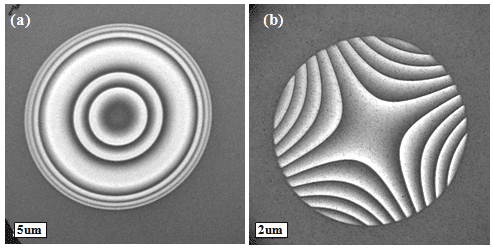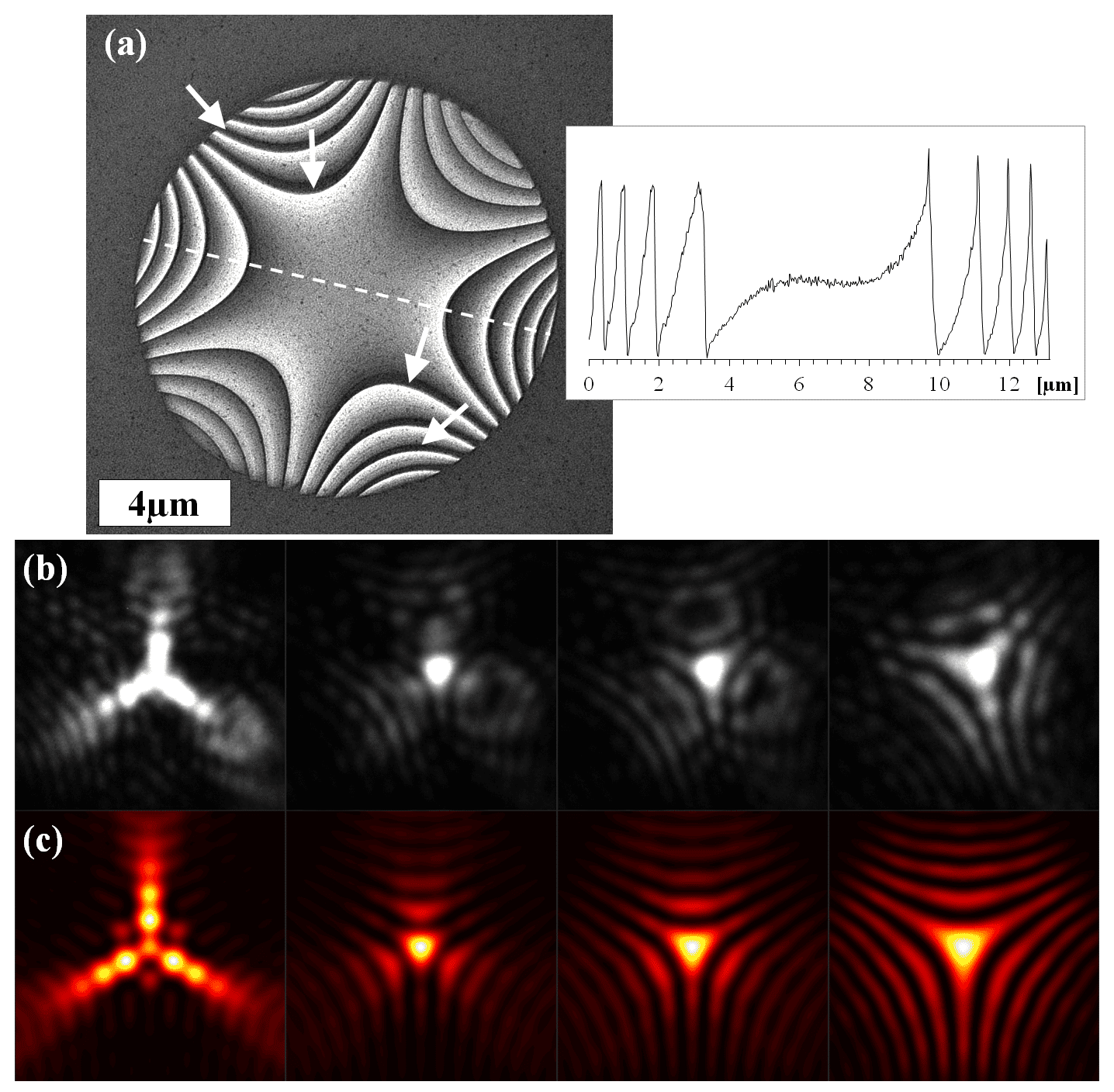Electron lenses suffer greatly from optical aberrations, the solution, though near-perfect, is very costly and cumbersome. We are working towards cheap solutions for probe correction using light-optics techniques, utilizing aberration-correcting phase masks[1].
Electron beams are extensively used in lithography, microscopy, material studies and electronic chip inspection. Unlike the standard in lenses for light, electron lenses suffer greatly from spherical aberration, among others. Electric and magnetic corrector elements are commercially available; however, disregarding practical difficulties, the cost of a corrected microscope almost doubles (from 1.5M€ to 2.7M€!). Using the shaping techniques we propose, a corrector element could be fabricated for ~100€. These elements cannot be dynamically tuned, however, they do not produce stray fields and thus are advantageous to field-sensitive measurements, and potentially offer complex wavefront correction schemes which are hard or impossible to achieve using commercial correctors.
Some of the known aberrations from every-day light optics are spherical aberration and astigmatism. Another aberration is the trefoil or threefold-astigmatism aberration, less known in modern-day light-optics but well known in electron microscopy. Employing knowledge from light optics, we fabricated and measured electron phase-holograms that shaped the electron probe (e.g. for SEM, STEM, and lithography applications) and imprinted it with these aberrations [1]. It is thus a simple matter to revert an aberrated beam and at least partially remove such aberrations.
In this talk, I will present the general idea of probe shaping, review the different aberrations we induced and present prospects for future work.

Fig.1. Measured example phase masks imparting (a) spherical aberration, and (b) two-fold astigmatism, to the electron beam.

Fig.2: Threefold astigmatism: (a) fabricated phase-mask, dashed line marking extents of the intensity cross-section in the inset. (b) Measurements and (c) simulation of a focal series extending up to the focal point. Contrast and brightness altered for visibility.
[1] R. Shiloh*, R. Remez*, A. Arie, “Prospects for electron beam aberration correction using sculpted phase masks,” Ultramicroscopy, accepted (2/2016).

